-
Digital Marketing
We help you to use your digital potential. For a strong positioning, more visibility and more leads.
Get Growth ready
With the BEE.Transformance model, we bring continuous and profitable growth to your company. A new mindset for your team.
Industries
We transform your challenges into opportunities through the experience we have gained from projects in these industries.
-
HubSpot Services
As a HubSpot Diamond Partner, we help you implement your digital growth strategy with a focus on performance - by implementing and integrating new and existing systems as well as 3rd party apps.
HubSpot Thought Leader
As a HubSpot Diamond Partner with +50 certifications, host of the HubSpot User Group Zurich, HubSpot Trainer and HuSpot User Champions, you have access to in-depth HubSpot expertise.
HubSpot Solutions
The BEE.Theme offers you more creative freedom than any other theme on the market. Whether you're a beginner or a professional, a creative mind or a digital agency - with the BEE theme, you can easily unleash the maximum power for your pages in HubSpot CMS.
-
BEE.Blog
Knowledge around digital marketing, digital sales, technology, data intelligence and employees.
Knowledge Base
Pure knowledge: everything essential concentrated, compact, digitally prepared for you and ready to download.
What is inbound?
The most effective way to successfully combine digital marketing and digital sales.
-
BEE.Team
The BEE.Performers: many different characters - with one thing in common: the fascination for a digital world.
References
More than 100 large and small companies have already started with BEE: to more visibility, more performance, more growth.
Invest
Participate in the growth of BEE and become part of the BEE Growth Story by purchasing Digital Share Tokens.
We're hiring
Become a BEE.Performer! Are you ready for your own transformation?
What Does a Good Consulting Report Look Like?
We all have friends and colleagues who specialise in something or have a valuable skill that occasionally becomes pertinent in our own lives. For example, if you’d like to take legal action against a neighbour whose new fence infringes on your boundary, a lawyer friend may have some handy tips about what you should do. But this sort of informal advice should not be confused with an actionable plan. For that, you’ll have to take up the services of a lawyer who specialises in property law and who will formally commit to your case. They will then review all the relevant information and suggest the best legal route to resolve your problem.
On the other hand, when a company is faced with a particular challenge that cannot be solved with internal resources, it does not help to know what the solution might be, but to bring in an expert to help the company implement that solution.
A consultant with specialist knowledge and experience should deliver an objective and insightful perspective that helps to solve the problem the business is facing. The analysis and solution the consultant provides are typically documented in a consulting report.
The consulting report will often act as the foundation for any action that the business takes to resolve issues or achieve certain outcomes; it’s therefore extremely important to ensure that this document is full of solid facts and sound advice.
What exactly is a consulting report?
A consulting report is a formal, structured document that is comprised of data, performance analysis and recommendations for the road ahead. The information within the consulting report is strictly objective, and all facts presented must be backed by legitimate sources.
This type of document has to be created by a professional who can share pragmatic insights and offer solutions to the technical questions or problems that the business would otherwise not be able to solve on its own.
What does a consulting report contain?
Although the contents of the consulting report will vary depending on the industry, the objective and the particular purpose it needs to fulfil, generally, there is a basic template that you can expect to encounter when paging through this type of document.
Key contents of a consulting report:
- Table of contents for easy navigation.
- Introduction – setting the scene and providing context.
- Client profile – showing an understanding of the business, its challenges and successes.
- Description and analysis of the problem.
- Data and insights – the key performance indicators that relate to the problem.
- Proposed solution and recommendations – may include suggestions for tools and methodologies.
- Summary – an easy-to-read, comprehensive roundup of key findings and suggestions.
- List of relevant sources.
What types of consulting reports are there?
There are as many types of reports as there are problems to solve; the key is to understand the audience and the purpose of the report so that the client can immediately gain value from the investment made in acquiring these specialist insights.
Examples of consulting reports:
- Market or competitor analysis
- Sales report
- Cybersecurity report
- Social media report
- Website performance report
The consulting report isn’t a nice-to-have piece of corporate literature. For your client, it is the bedrock upon which their development plan is built. Therefore, it’s important to consider who within the business will be utilising and applying the data and recommendations contained within the report so that there is no room for error or misinterpretation when it comes to assimilating the information into a strategy.
Consulting Report Examples and Templates
Effective reporting requires an efficient process that lets you focus on the research, interpretation and presentation. Having ready-made templates makes it faster and easier to arrange your data into a sequence that quickly starts to take shape into a meaningful document. Of course, you can’t apply the same template to every scenario, but there are plenty of transferable commonalities that you can apply to each report.
Here are some useful templates and examples to get you started:
Customer Support Report
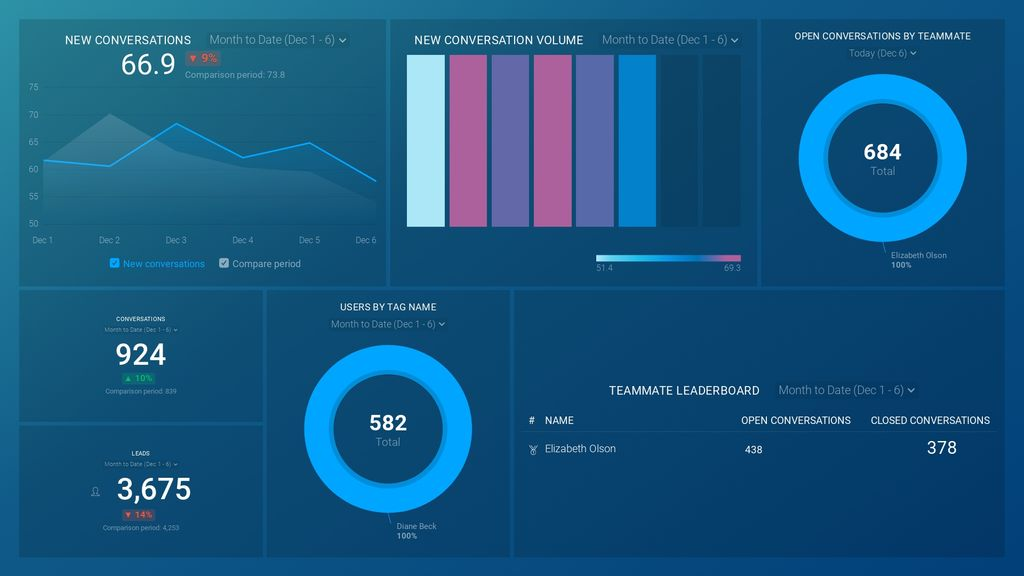
Source: Databox
Businesses invested in excellent customer support often rely on various digital platforms to collect, store and utilise customer data. A customer support dashboard can help track key performance metrics from multiple tools such as HubSpot or HelpScout. Templates can focus on insights such as closed conversations, number of active users and inactive users. Key metrics to include in your report are:
- Number of daily support requests
- Number of requests closed per agent
- Average response time
- Average handle time
- Fist contact resolution
- Customer satisfaction
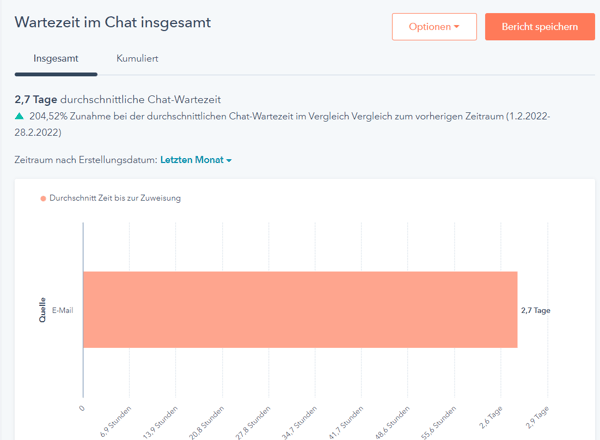
Sales Report
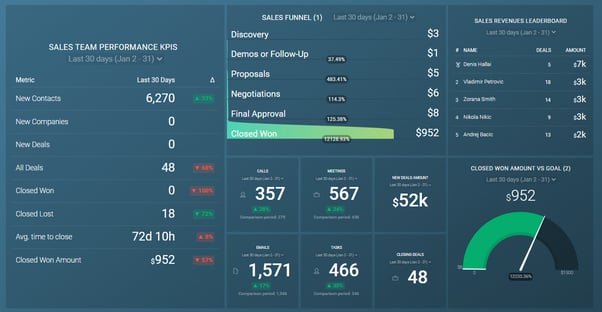
Source: Databox
A sales report will share insights on sales data collected over a period of time. In order to analyse a company’s sales performance, there are some important things to cover in a sales report, namely:
- Highest converting landing pages
- Daily, weekly and monthly sales rate
- Abandoned and recovered carts
- Sales team productivity
This data is extracted from platforms such as Salesforce, Pipedrive and HubSpot CRM – to name a few.
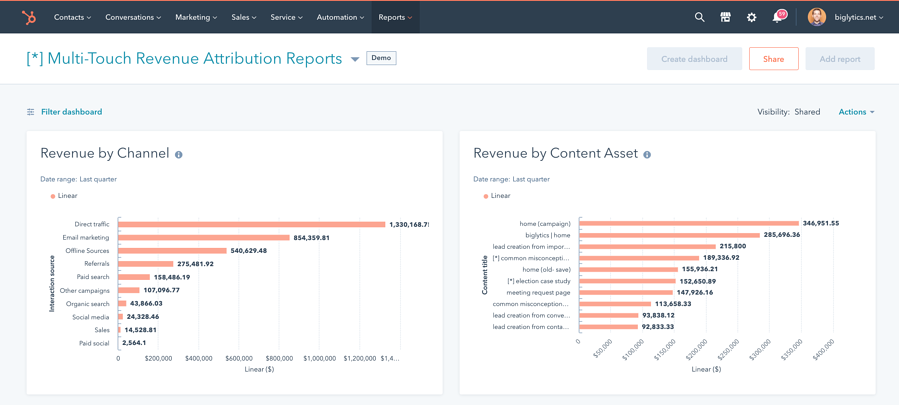
Source: HubSpot
Marketing Report
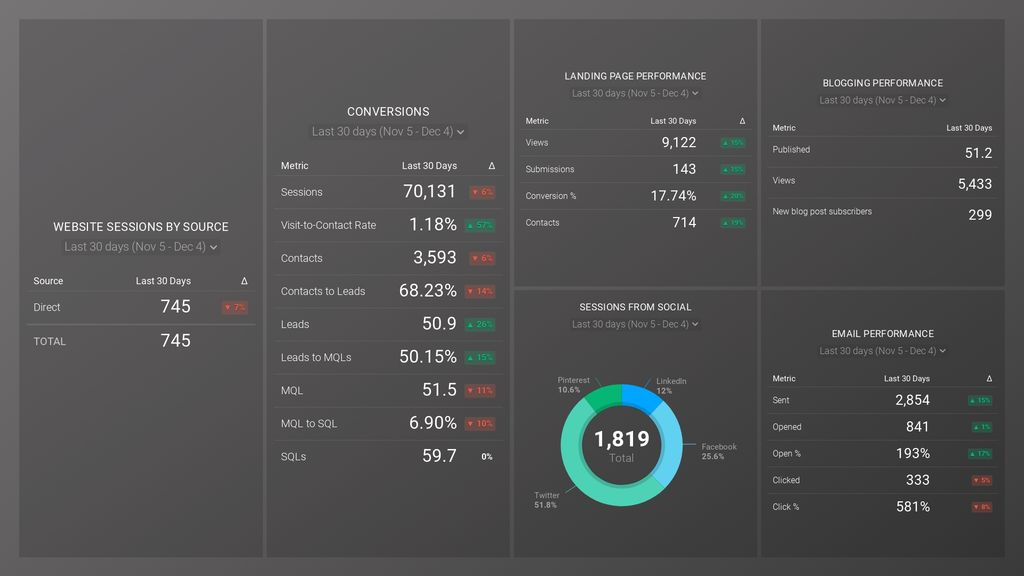
Source: Databox
Marketing reports are critical when trying to prove the effectiveness of campaigns and secure investment in new strategies and tools. A marketing report should offer a visual overview of marketing performance. Data for this type of report will come from your HubSpot CRM, Google Analytics, Hotjar and other similar platforms. A marketing report will show how landing pages are performing, where website traffic is coming from, and if there are any areas that can be optimised in the buyer’s journey. A marketing report should cover the following key areas:
- SEO performance
- PPC campaign performance
- Social media performance
- Email marketing perfirmance
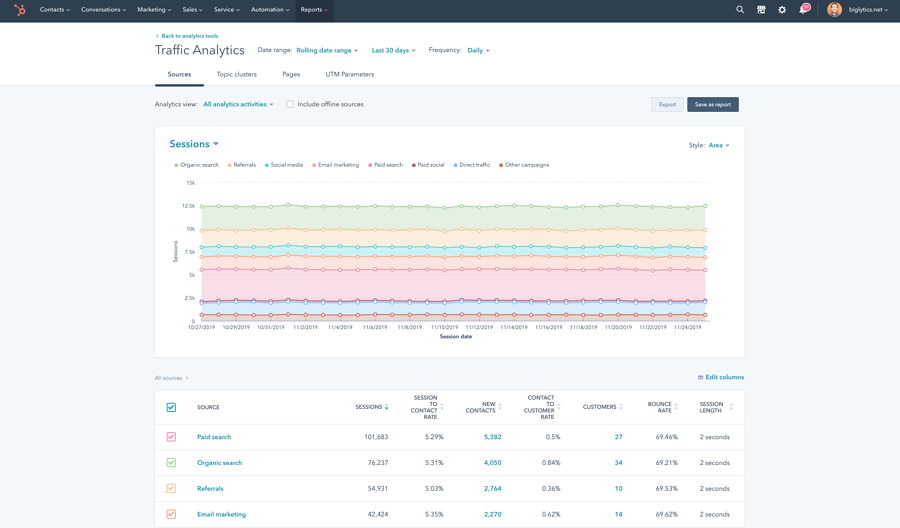
Source: HubSpot
Pro tips for writing a consulting report
- Get to the point: Use straightforward, uncomplicated language.
- Stay neutral: A report should always be unbiased and objective – ensure that the language you use doesn’t invalidate or confuse the data.
- Discuss likely outcomes: Give clients the probable outcomes for alternative scenarios so that they can make a more informed decision about the path they choose.
- Apply logic to everything: The flow of your report should follow a logical sequence. Equally, your suggestions and conclusions should explain why you have selected a particular strategy or approach and demonstrate the logic behind it.
- Use data: Illustrate your key points through graphs and tables.
Conclusion
Consulting reports are essential when problem-solving or as general prophylaxis to ensure that business strategies are fulfilling their objectives. When compiled and presented effectively, they become invaluable assets that help organisations map their journey to growth and progress.
Learn how to write high-quality reports by following our free eBook, Data for Business Intelligence.
Comment
Related Posts
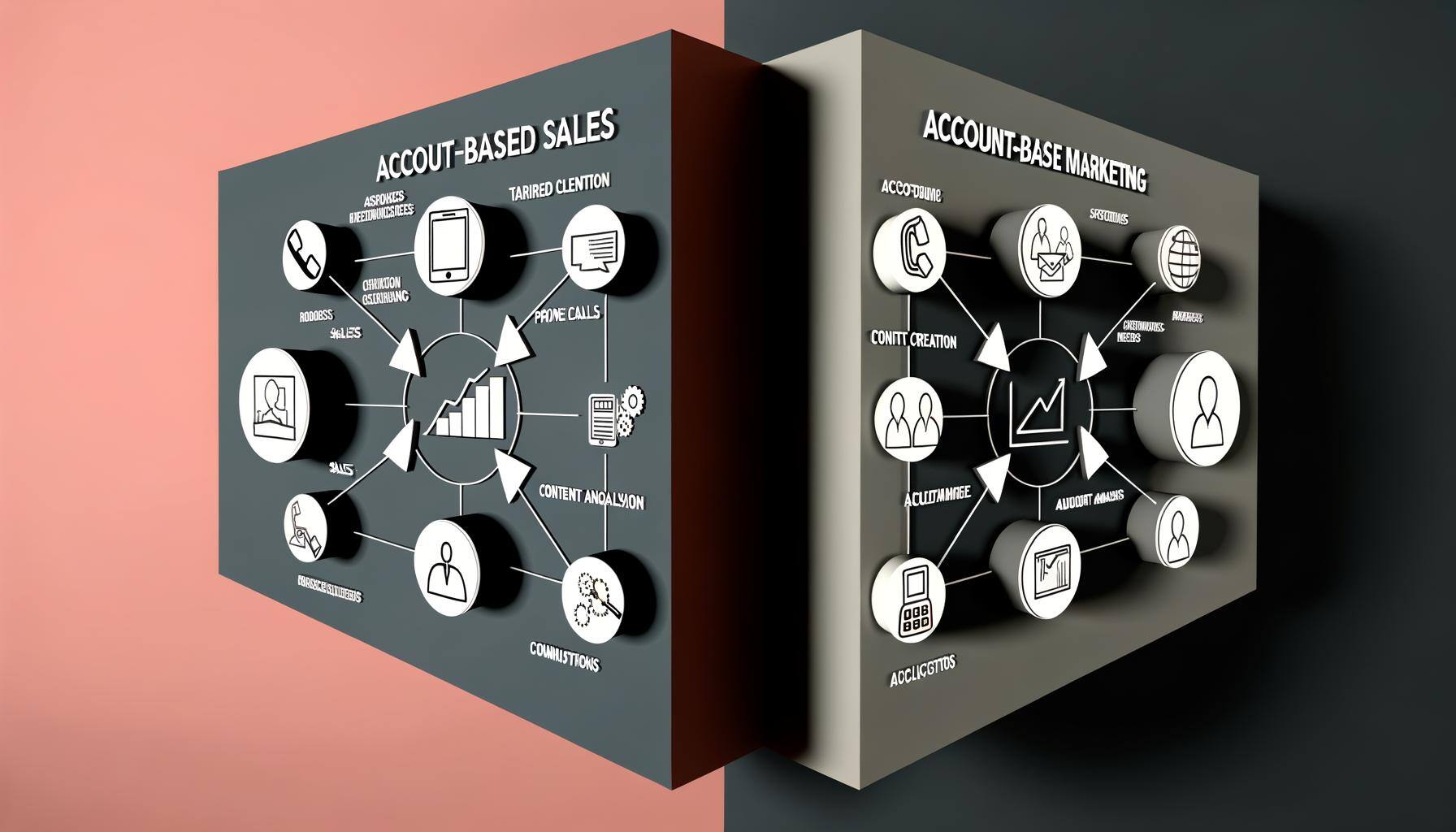
Differences Between Account-based Sales (ABS) and Account-based Marketing (ABM)
Philipp Schirmer | 6 Jun 2024
In the realm of B2B strategies, ABS and ABM are key players in targeting high-value accounts. Discover their unique approaches and how they drive results.
reading time: 7min
Zum Blog

Cracking Your Top Accounts With Account-Based Sales
Pascal Bänninger | 29 Jun 2023
It's a big blue sea of potential clients out there, and it can be tempting to cast your net a little too wide. But you don't need us to tell you that, sooner or later, ...
reading time: 8min
Zum Blog

Data Mapping: Better Insights to Make Data-Based Decisions
Nik Engel | 8 Sep 2023
In a world that treats data as the new gold, data-driven organisations don't just have a competitive edge; they're practically in a league of their own. Studies show ...
reading time: 10min
Zum Blog
